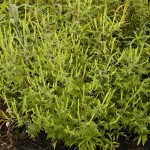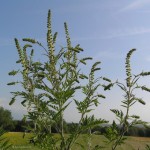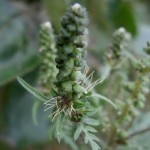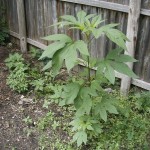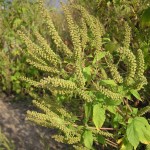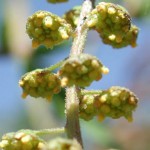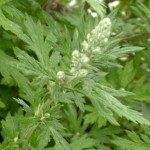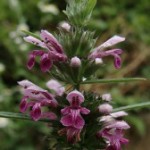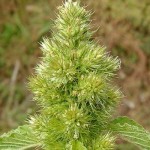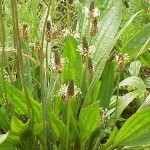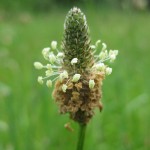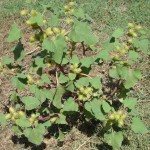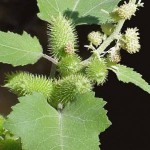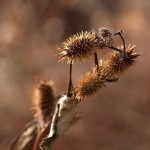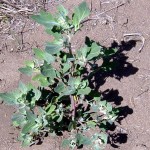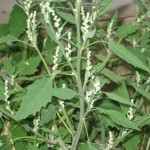Weeds in Northeast America pollinate from late summer to first frost, causing seasonal hay fever. Measures can be taken to minimize pollen contact.
Ragweed
Ragweeds are annual and perennial herbs and shrubs. They vary in size in different species from a few inches to over 12 feet. Two species, common ragweed and giant ragweed, are the main causes of seasonal allergies in the United States.
Common (short) ragweed is most common. Stems are erect, growing to 3 feet tall. Leaves are soft, green, and opposite or alternate. Each leaf is divided into narrow segments, which are in turn irregularly lobed. Male and female flowers are in separate heads on the same plant. Male flowers form slender racemes near the top of the plant. Female flowers cluster at the bases of the racemes. Pollination period extends from the beginning of August to mid-October with a peak from mid-August to the end of September. Female flowers produce fruits called burrs.
Giant Ragweed is much less abundant. Stems are coarse, hairy, growing to 2m in height. Big leaves are opposite or alternate, and generally have three lobes. Flower from June to September.
Mugwort
Mugwort is a problem weed. Once introduced to a landscape, it is difficult to control. It generally reaches 3 feet or more in height, and has a rather untidy appearance. The stem is woody with a red tinge. Leaves are deeply lobed. Lower leaf surface has heavy white hairs. Young mugwort can be confused with ragweed, but the latter has more finely cut leaves. Flowers are small, radially symmetrical with many yellow or dark red petals. Flower heads spread out in racemose panicles. Flower from July to September.
Common Pigweed
May reach up to 3m (10 feet) in height. Stems are stout, usually with short hairs, especially near top portions. Shallow taproot, often reddish in color. Leaves are grey-green, oval-spearhead-shaped, and covered with dense, coarse hair. Flowers are greenish-grey; form spikes at the top of the plant or between stem and leaf axils. Bloom from mid-summer to fall. Seeds are small, shiny, and black in bushy spikes. Edible.
English Plantain
Rosette-forming perennial herb. Leaves are long. Flower stalks are leafless, silky and hairy. Flower heads stand on top of flower stalks, oval-shaped with tiny greenish-white flowers. They lengthen when aging. Flower from May to October.
Cocklebur
A grey-green plant, may grow to 1.5m (5 feet). Plant is coarse and bushy. Stems are rigid and very rough. Leaves are lobed, triangular or heart-shaped, coarsely toothed, and rough on both sides. Male flowers are small and green, hidden at top of the plant in round clusters. Female flowers occur in burs between stem and leaf axils. Flower from July to October. Burs have hundreds of stiff, hooked spines that cling readily to clothing or animal fur.
Lamb’s Quarters
Grow upright at first, typically become recumbent after flowering. Leaves are alternate and can be varied in appearance. Early leaves are toothed and triangle or diamond-shaped. Leaves on the upper part of flowering stems are lance-shaped. Flowers are tiny and green; bloom in clusters on spikes. Flower from June to October. Leaves and seeds are edible.
For more information, please visit http://www.phadia.com/en/Products/Allergy-testing-products/ImmunoCAP-Allergens/Weed-Pollens/
